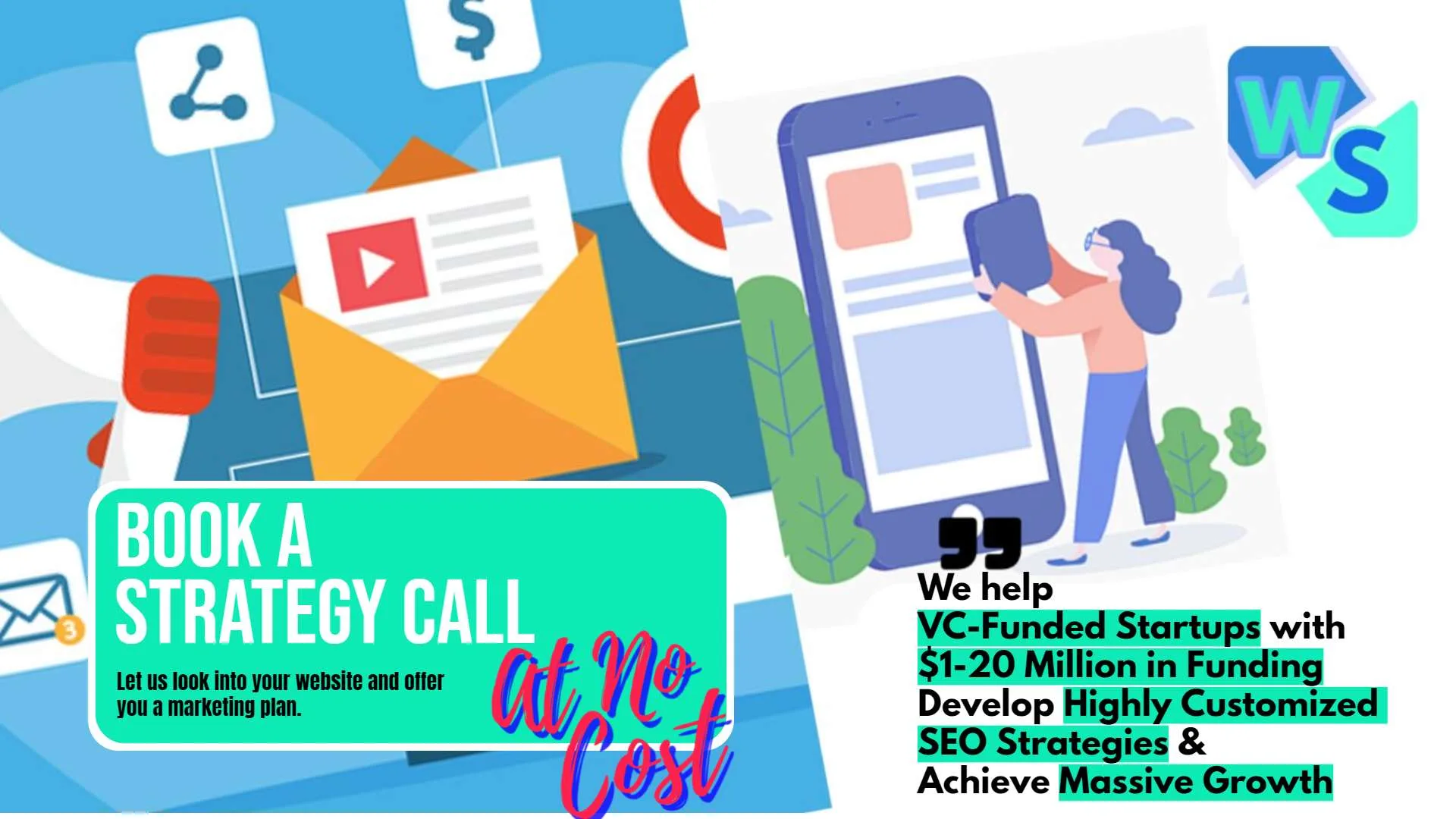Marketing posters are a powerful tool for grabbing attention and communicating your message effectively. Whether you’re promoting an event, launching a new product, or spreading awareness about your brand, a well-designed poster can make a significant impact. In this guide, we will explore how to create impactful marketing posters that captivate your audience and drive results. From design principles to strategic placement, you’ll learn everything you need to know to create posters that stand out and achieve your marketing goals.
Understanding the Purpose of Your Poster
Align with Overall Marketing Goals
When creating a marketing poster, it’s essential to ensure it aligns with your broader marketing goals. Whether you aim to increase brand awareness, drive traffic to a physical location, or boost sales, your poster should contribute to these objectives. For startup founders, this means clearly defining how each poster fits into your overall strategy.
For instance, if your goal is to build brand awareness, your poster might focus on showcasing your brand’s unique value proposition and logo prominently. If driving foot traffic is the aim, including a compelling call-to-action like “Visit us today for a special discount!” is crucial.
Target Specific Campaigns
Each poster should serve a specific campaign or promotion. Before designing, outline the details of your campaign. Are you promoting a seasonal sale, a product launch, or an upcoming event? Clarify the campaign’s goals, target audience, and key messages.
For example, if you’re launching a new product, your poster should highlight the product’s benefits, launch date, and where customers can find it. This targeted approach ensures that your poster is not just a standalone piece but part of a cohesive marketing effort.
Consider the Poster’s Lifecycle
Understanding the lifecycle of your poster can enhance its impact. Determine how long the poster will be displayed and plan your content accordingly. Short-term posters for events should have urgency, with clear dates and times, while long-term posters for brand awareness can have a more evergreen message.
For example, a poster promoting a one-day sale should have bold, attention-grabbing elements that convey urgency, whereas a poster intended to introduce your brand to the community can focus more on your brand story and values.
Integrate with Other Marketing Channels
Your poster should not exist in isolation. Integrate it with other marketing channels to amplify its reach and effectiveness. For instance, include a QR code that leads to your website or social media pages, encouraging viewers to engage with your brand online.
Mention your poster in your email newsletters, social media posts, and even in press releases. This multi-channel approach ensures that your message reaches a wider audience and reinforces your marketing campaign across various platforms.
Measure Success Metrics
Define success metrics for your poster campaign to evaluate its effectiveness. Common metrics include the number of leads generated, sales conversions, event attendance, and brand awareness. Use tools like unique URLs or discount codes to track responses directly attributed to the poster.
For example, if you’re promoting an event, you might use a specific URL on the poster for RSVPs, allowing you to track how many attendees came through that channel. Regularly review these metrics to understand what works and refine your strategies for future campaigns.
Adapt for Different Audiences
Tailor your poster design and messaging to different audience segments. If your startup caters to multiple demographics, consider creating variations of your poster for each group. For instance, a tech gadget might appeal to both young professionals and older tech enthusiasts, but the messaging and visuals that resonate with each group may differ.
Young professionals might respond to sleek, modern designs with a focus on innovation, while older audiences might prefer clear, straightforward information highlighting reliability and ease of use. Adapting your posters ensures that you connect with each segment effectively.
Focus on Unique Selling Proposition (USP)
Your poster should clearly communicate your unique selling proposition. What sets your product or service apart from the competition? This is particularly important for startups looking to establish a foothold in the market.
Highlighting your USP can attract attention and make a compelling case for why potential customers should choose you. For instance, if you offer the fastest delivery in the area, your poster should boldly state this benefit. The clearer and more compelling your USP, the more effective your poster will be in converting viewers into customers.
Leverage Emotional Appeal
Connecting with your audience on an emotional level can significantly enhance the impact of your poster. Use images, colors, and messages that evoke the desired emotional response, whether it’s excitement, trust, nostalgia, or urgency.
For example, a poster for a charity event might use warm colors and heartfelt images to evoke empathy and encourage donations. Understanding the emotional triggers that resonate with your audience helps create a more powerful and memorable poster.
Plan for Seasonal and Cultural Relevance
Aligning your poster with seasonal or cultural events can increase its relevance and appeal. Consider holidays, local festivals, or significant dates that matter to your audience.
For instance, a holiday-themed poster can leverage the festive spirit to promote special offers, while a poster during a cultural festival can show your business’s involvement and support for the community. Seasonal and culturally relevant posters can attract more attention and engage your audience more effectively.
Ensure Compliance and Sensitivity
Finally, ensure that your poster content complies with legal standards and is culturally sensitive. This is especially important for startups looking to build a positive reputation.
Avoid controversial or potentially offensive content, and make sure all claims are truthful and substantiated. Being mindful of these aspects protects your brand and builds trust with your audience.
Design Principles for Impactful Posters

Keep It Simple
Simplicity is crucial in poster design. A cluttered poster can overwhelm viewers and dilute your message. Focus on a single, clear message and avoid overcrowding your poster with too much text or too many images.
Use white space effectively to create a clean and organized look. A simple, uncluttered design makes it easier for viewers to quickly grasp the main message and take action.
Use High-Quality Images
Images play a vital role in capturing attention and conveying your message. Use high-quality, relevant images that support your message and enhance the visual appeal of your poster. Avoid using stock photos that look generic or overused.
If possible, use original photos or illustrations that reflect your brand’s identity. High-quality visuals not only make your poster more attractive but also help build trust and credibility.
Choose the Right Colors
Colors evoke emotions and can influence how your message is perceived. Choose a color scheme that aligns with your brand and the mood you want to convey. F
or example, blue often represents trust and professionalism, while red can evoke excitement and urgency. Use contrasting colors to make important elements, such as your CTA, stand out. Consistent use of your brand colors helps reinforce brand recognition and recall.
Typography Matters
The fonts you choose can greatly impact the readability and overall look of your poster. Use bold, easy-to-read fonts for your headline and key information. Avoid using too many different fonts, as this can make your poster look disorganized.
Stick to one or two complementary fonts to create a cohesive and professional appearance. Ensure that your text is large enough to be easily read from a distance, especially for key details like the event date and location.
Create a Strong Hierarchy
A well-designed poster should have a clear visual hierarchy that guides the viewer’s eye to the most important information first. Use size, color, and placement to create a hierarchy.
For example, your headline should be the largest and most prominent element, followed by the main image, supporting text, and CTA. A clear hierarchy ensures that viewers can quickly understand the main message and know what action to take next.
Crafting a Compelling Message
Start with a Strong Hook
The first step in crafting a compelling message is to create a strong hook that immediately grabs attention. This could be an intriguing question, a bold statement, or a surprising fact. Your hook should be directly related to the main benefit or unique selling proposition (USP) of your product or service.
For example, if you’re promoting an eco-friendly product, you might start with a question like, “Want to save the planet one purchase at a time?” A strong hook draws viewers in and encourages them to read further.
Highlight Key Benefits
Focusing on benefits rather than features makes your message more relatable and impactful. Clearly articulate how your product or service solves a problem or improves the lives of your audience. For instance, instead of just stating that a gym offers 24/7 access, highlight the benefit:
“Work out on your schedule, anytime, day or night.” Benefits resonate more because they address the needs and desires of your audience, making them more likely to take action.
Create a Sense of Urgency
Creating a sense of urgency can motivate viewers to act quickly. Use time-sensitive language to convey the need for immediate action. Phrases like “Limited time offer,” “Only a few spots left,” or “Ends soon” can encourage potential customers to respond before they miss out.
For example, a poster advertising a flash sale might say, “50% off for today only! Don’t miss out!” Urgency reduces procrastination and drives immediate engagement.
Use Persuasive Language
Choosing the right words can significantly influence how your message is perceived. Use persuasive and action-oriented language to encourage your audience to take the desired action.
Words like “discover,” “improve,” “enjoy,” and “save” are effective in conveying benefits and prompting action. For instance, a travel agency might use the phrase, “Discover your dream vacation at unbeatable prices,” to entice potential travelers.
Incorporate Testimonials and Social Proof
Including testimonials and social proof can build credibility and trust. Quotes from satisfied customers, endorsements from influencers, or statistics showing your product’s popularity can reassure potential customers of your offering’s value.
For example, a poster for a new restaurant could feature a quote from a well-known food critic or a customer review like, “Best dining experience I’ve had in years!” Social proof leverages the experiences of others to validate your message.
Ensure Clarity and Brevity
Your message should be clear and concise, with no room for ambiguity. Avoid jargon and complex language that could confuse your audience. Use short sentences and simple words to ensure your message is easily understood at a glance.
For example, instead of saying, “We provide comprehensive automobile maintenance services,” you could say, “Fast, reliable car care.” Clarity and brevity make your poster more accessible and effective.
Align with Your Brand Voice
Consistency in your brand voice helps reinforce your brand identity and makes your message more memorable. Whether your brand is casual and friendly, professional and authoritative, or playful and fun, your poster’s tone should reflect this.
For instance, a tech startup with a casual brand voice might say, “Join the future of tech – get started today!” while a financial services firm might use a more formal tone: “Secure your financial future with our expert guidance.”
Address Potential Objections
Anticipating and addressing potential objections can make your message more persuasive. Think about common concerns your audience might have and provide reassuring information.
For example, if cost is a common concern, you might include a line like, “Affordable plans available – something for every budget.” Addressing objections upfront shows that you understand your audience’s needs and are prepared to meet them.
Use a Clear and Direct Call-to-Action
Your call-to-action (CTA) is arguably the most important part of your poster. It should be clear, direct, and easy to follow.
Tell your audience exactly what you want them to do next, whether it’s visiting your website, signing up for an event, or calling for more information. Use imperative verbs like “Register now,” “Visit us today,” or “Call to book.” Ensure the CTA stands out visually with a contrasting color and prominent placement.
Make It Personal
Personalizing your message can increase engagement and make your audience feel valued. Use direct address, such as “you” and “your,” to create a connection with the viewer.
For example, a fitness center poster might say, “Transform your health today” instead of “Transform health today.” Personalization makes your message feel more relevant and targeted, increasing the likelihood of a positive response.
Utilize Visual Hierarchy to Emphasize Key Points
Visual hierarchy helps guide the viewer’s eye through your poster and emphasizes the most important elements of your message. Use size, color, and placement to make key points stand out.
For instance, your headline should be the largest text on the poster, followed by the main benefits and the CTA. Visual hierarchy ensures that viewers can quickly and easily understand your message, even at a glance.
Incorporate Interactive Elements
Adding interactive elements can enhance engagement and make your poster more dynamic. This could include QR codes that link to a video, website, or special offer.
Interactive elements encourage viewers to take the next step and provide a seamless way to transition from interest to action. For example, a poster promoting a new app might include a QR code with the prompt, “Scan to download now.”

Designing for Maximum Impact
Use Visual Elements to Tell a Story
Visual storytelling can make your poster more engaging and memorable. Use images, icons, and graphics to create a narrative that supports your message.
For example, if you’re promoting a charity run, you could include images of runners, a route map, and icons representing different milestones. Visual elements help break up text and make your poster more dynamic and interesting.
Balance Text and Images
A balanced layout ensures that your poster is visually appealing and easy to read.
Distribute text and images evenly across the poster, avoiding large blocks of text or too many images in one area. Use grids and alignment tools to create a harmonious layout. Balance creates a professional look and ensures that no single element overwhelms the viewer.
Incorporate Brand Elements
Consistency with your brand’s visual identity is key to building recognition and trust. Incorporate your logo, brand colors, and fonts into your poster design.
This not only reinforces your brand but also makes your poster instantly recognizable. Consistent branding across all marketing materials helps create a cohesive and professional image.
Optimize for Different Formats
Consider the various formats in which your poster might be displayed. Design with flexibility in mind so that your poster looks good both in print and online.
Ensure that your poster is legible from a distance for physical displays and looks sharp on digital screens. Test your design in different formats to ensure it maintains its impact and readability.
Use Professional Design Software
Investing in professional design software like Adobe Illustrator or Photoshop can significantly enhance the quality of your posters. These tools offer advanced features and flexibility that free design tools may lack.
If design isn’t your strong suit, consider hiring a professional designer. The investment can pay off in the form of a high-quality, impactful poster that effectively communicates your message.
Strategically Placing Your Posters
Identify High-Traffic Areas
Placing your posters in high-traffic areas maximizes their visibility and impact. Consider locations like busy streets, shopping centers, community boards, and public transportation hubs.
Think about where your target audience is likely to spend time and seek permission to display your posters there. High visibility increases the chances that your poster will catch the eye of potential customers.
Leverage Local Businesses and Venues
Partner with local businesses and venues to display your posters. Coffee shops, gyms, libraries, and community centers are great places to reach a diverse audience.
Establish relationships with business owners and offer to reciprocate by promoting their services or events. Collaborating with local establishments can extend your reach and build community support.
Utilize Events and Festivals
Events and festivals attract large crowds and provide a great opportunity to showcase your posters. Whether it’s a music festival, farmers market, or local fair, these events gather people who are often open to discovering new things.
Display your posters prominently at these events to capture the attention of attendees. Event-based marketing helps you connect with potential customers in a lively, engaged setting.
Digital Display Opportunities
In addition to physical locations, consider digital display opportunities.
Many businesses, including cafes and gyms, have digital bulletin boards or screens where they display community announcements. Inquire about showcasing your poster on these digital platforms. This can be especially effective for reaching tech-savvy audiences who frequent these spaces.
Measuring the Effectiveness of Your Posters
Set Clear Objectives
Before you can measure the effectiveness of your posters, it’s essential to set clear, measurable objectives. These could be increasing foot traffic to your store, boosting attendance at an event, or driving traffic to your website.
Your objectives should be specific, such as increasing event attendance by 20% or generating 50 new leads within a month. Clear objectives provide a benchmark against which you can measure your success and determine the impact of your poster campaign.
Use Unique Tracking Mechanisms
To accurately measure the impact of your posters, use unique tracking mechanisms. This can include QR codes, unique URLs, or custom discount codes that are specific to your poster campaign. For example, a restaurant could use a QR code on their poster that links to a reservation page, allowing them to track how many bookings came directly from the poster.
Similarly, a unique discount code like “POSTER20” can help you track sales generated from the campaign. These mechanisms provide concrete data on engagement and conversion rates.
Monitor Online Traffic and Engagement
If your poster directs people to an online platform, monitor your web analytics to see the impact. Tools like Google Analytics can show you how much traffic your website receives from the specific URLs used in your posters.
Pay attention to metrics such as page views, time spent on site, and bounce rate to understand the quality of the traffic. If you notice a significant increase in traffic from these URLs, it indicates that your poster is effective in driving online engagement.
Track In-Store Visits
For physical locations, track the increase in foot traffic to your store or event venue. This can be done manually by comparing foot traffic data before and after your poster campaign or using technology like door counters.
If you’re promoting an event, compare attendance numbers with previous events to gauge the poster’s effectiveness. Surveys or feedback forms can also help you understand how customers heard about your event or promotion.
Collect Direct Feedback
Gather direct feedback from your audience to gain insights into the effectiveness of your posters. This can be done through surveys, social media polls, or direct conversations with customers. Ask questions like how they found out about your event or what caught their attention about your poster.
This feedback helps you understand what aspects of your poster are working and what could be improved. For instance, if many people mention the eye-catching design, you know your visuals are effective, but if the message isn’t clear, that’s an area to work on.
Analyze Sales and Revenue Impact
For posters aimed at driving sales, analyze your sales data to measure the campaign’s impact. Compare sales figures during the poster campaign with previous periods to see if there’s a noticeable increase. Look at the sales of specific products or services featured in the poster to determine their success.
If you used discount codes, track how many were redeemed and calculate the total revenue generated from those sales. This analysis helps you assess the return on investment (ROI) of your poster campaign.
Monitor Social Media Mentions
If your poster includes social media handles or hashtags, monitor the engagement on these platforms. Use social media listening tools to track mentions, shares, and comments related to your campaign.
High levels of engagement and positive feedback on social media indicate that your poster resonated with your audience. Additionally, social media analytics can provide demographic information about who is engaging with your content, helping you refine your targeting strategies.
Conduct A/B Testing
A/B testing involves creating two versions of your poster with slight variations in design, message, or CTA, and comparing their performance. For example, you might test different headlines or imagery to see which one generates more engagement.
Place the two versions in similar locations and track the results using unique tracking codes. A/B testing helps you identify the most effective elements of your poster and make data-driven decisions for future campaigns.
Evaluate Long-Term Impact
While immediate results are important, also consider the long-term impact of your poster campaign. Evaluate whether the campaign has led to increased brand awareness, customer loyalty, or ongoing engagement.
For instance, if your poster campaign successfully drove attendance to an event, look at whether those attendees have continued to engage with your brand afterward. This could include tracking repeat customers, newsletter sign-ups, or social media followers gained as a result of the campaign.
Use Heat Mapping Technology

Heat mapping technology can be used to understand how people interact with your posters in physical locations. This technology tracks where viewers’ eyes land first and what elements they spend the most time looking at.
By analyzing heat maps, you can determine which parts of your poster are most effective and which areas might need adjustment. This data can help you optimize the layout and design of future posters to maximize engagement.
Regularly Review and Refine
Measuring the effectiveness of your posters is an ongoing process. Regularly review your metrics, feedback, and sales data to understand what’s working and what’s not.
Use these insights to refine your poster designs, messages, and placement strategies continuously. Staying adaptable and responsive to the data ensures that your marketing efforts remain effective and aligned with your objectives.
Report and Share Results
Document and share the results of your poster campaigns with your team. Create detailed reports that include all relevant metrics, feedback, and analysis.
Sharing these results helps align your team’s efforts, provides insights for future campaigns, and ensures that everyone understands the impact of their work. Use the insights gained to set new goals and strategies for your next campaign.
Conclusion
Creating impactful marketing posters is both an art and a science. It requires a strategic approach that combines clear objectives, compelling messaging, and effective design principles. Understanding your target audience and the purpose of your poster is the foundation of a successful campaign.
By crafting a clear and concise message that resonates with your audience, using high-quality visuals, and strategically placing your posters in high-traffic areas, you can maximize their impact.
Leveraging digital tools and integrating your poster campaign with other marketing channels ensures a wider reach and better engagement. Utilizing metrics and feedback to continuously improve your approach is crucial for long-term success.
By measuring the effectiveness of your posters through various tracking mechanisms, monitoring engagement, and analyzing conversion rates, you can make data-driven decisions that enhance your marketing strategy.
Read Next:
- How to Develop a Winning Marketing Strategy
- Marketing Strategies to Boost Car Sales
- How to Use Business Cards Effectively in Marketing
- Statistics on Aligning Sales and Marketing Teams in 2024
- Autumnal Marketing Ideas to Implement in October





















Comments are closed.